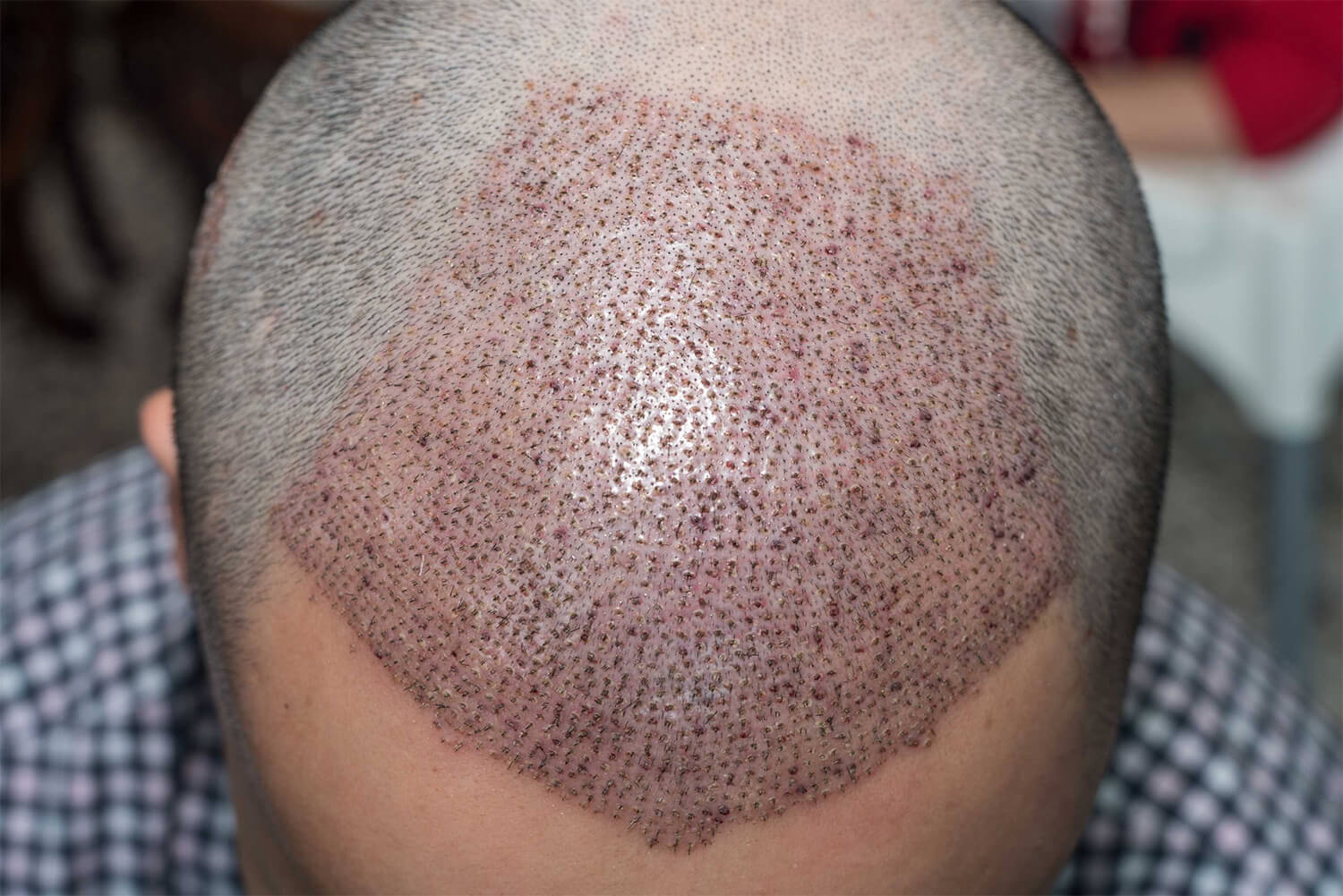Hair Transplant Redness: What to Expect and How to Manage It
If you’ve recently undergone a hair transplant or are planning one, you’re probably wondering how your scalp will look during recovery. One of the most common side effects is redness in the recipient and donor areas — especially in the first few days or weeks following the procedure.
But is this redness normal? How long does it last? Should you be concerned?
In this post, we’ll explore why redness occurs after a hair transplant, how long it typically lasts, and what you can do to support healing.

Why Does Redness Occur After a Hair Transplant?
Redness is a natural part of the healing process after any skin-based procedure. In a hair transplant, small incisions are made in the scalp to implant hair follicles. This creates minor trauma to the skin, triggering an inflammatory response that results in red or pink discoloration.
Here are the main reasons redness appears:
Micro-incisions: The tiny channels made for graft placement cause temporary irritation.
Increased blood flow: The body sends blood to the area to begin healing.
Skin sensitivity: The scalp is thin and highly vascularized, making redness more noticeable.
Redness may be more visible if you have lighter skin, as fair complexions tend to show inflammation more clearly.
How Long Does Redness Last After Hair Transplant?
Redness after a hair transplant is completely normal and usually peaks within the first 3 to 5 days. Most patients experience a noticeable reduction in redness within 7 to 14 days.
However, the exact timeline varies:
For light or sensitive skin: Redness may persist for 3 to 4 weeks or even slightly longer.
For medium to dark skin tones: Redness typically fades more quickly, within 1 to 2 weeks.
In rare cases, mild redness or a pink hue may linger for up to 2 months, especially if the skin is still healing beneath the surface.
What Areas Are Affected?
Redness can appear in:
The recipient area (where new grafts were implanted)
The donor area (where follicles were extracted, usually from the back or sides of the scalp)
Recipient area redness is usually more noticeable because it’s where the most trauma occurs. Donor area redness is often less intense and resolves more quickly.
When Should You Be Concerned?
While mild redness is a normal part of healing, there are some signs that may indicate complications and require medical attention:
Redness accompanied by swelling, pain, or pus
Persistent redness beyond 6 weeks
Itching with bumps or scabbing that worsens
Fever or flu-like symptoms
These could signal an infection or allergic reaction, and you should contact your doctor immediately if they occur.
How to Reduce Redness After a Hair Transplant
There’s no way to eliminate redness completely, but the following tips can help support healing and reduce visible irritation:
1. Follow post-operative care instructions
This includes how and when to wash your hair, how to sleep, and which products to avoid.
2. Avoid sun exposure
UV rays can worsen redness and damage healing skin. Wear a loose hat or stay indoors when possible.
3. Don’t scratch or rub the area
This can irritate the skin, dislodge grafts, and slow healing.
4. Stay hydrated and eat a healthy diet
Proper nutrition supports skin regeneration and reduces inflammation.
5. Use doctor-approved soothing products
Some clinics recommend saline sprays or anti-inflammatory creams. Only use what your surgeon approves.
6. Keep your head elevated while sleeping
This helps reduce swelling and improves blood flow, which can minimize redness.
Redness vs. Other Conditions
It’s important to distinguish normal post-surgical redness from other scalp issues, such as:
Folliculitis: Small pimples or pustules around the follicles
Contact dermatitis: Allergic reactions to hair products
Scalp infections: Redness with heat, discharge, or pain
If you’re unsure, it’s always best to consult your clinic for personalized guidance.
Final Thoughts
Redness after a hair transplant is normal and usually temporary. It’s a sign that your body is healing and adjusting to the newly implanted hair follicles. For most people, the redness subsides within a few weeks and can be managed with gentle care and patience.
If you have concerns about how your scalp looks or feels after your procedure, your surgeon or medical advisor is the best person to help you monitor your recovery and provide reassurance.
